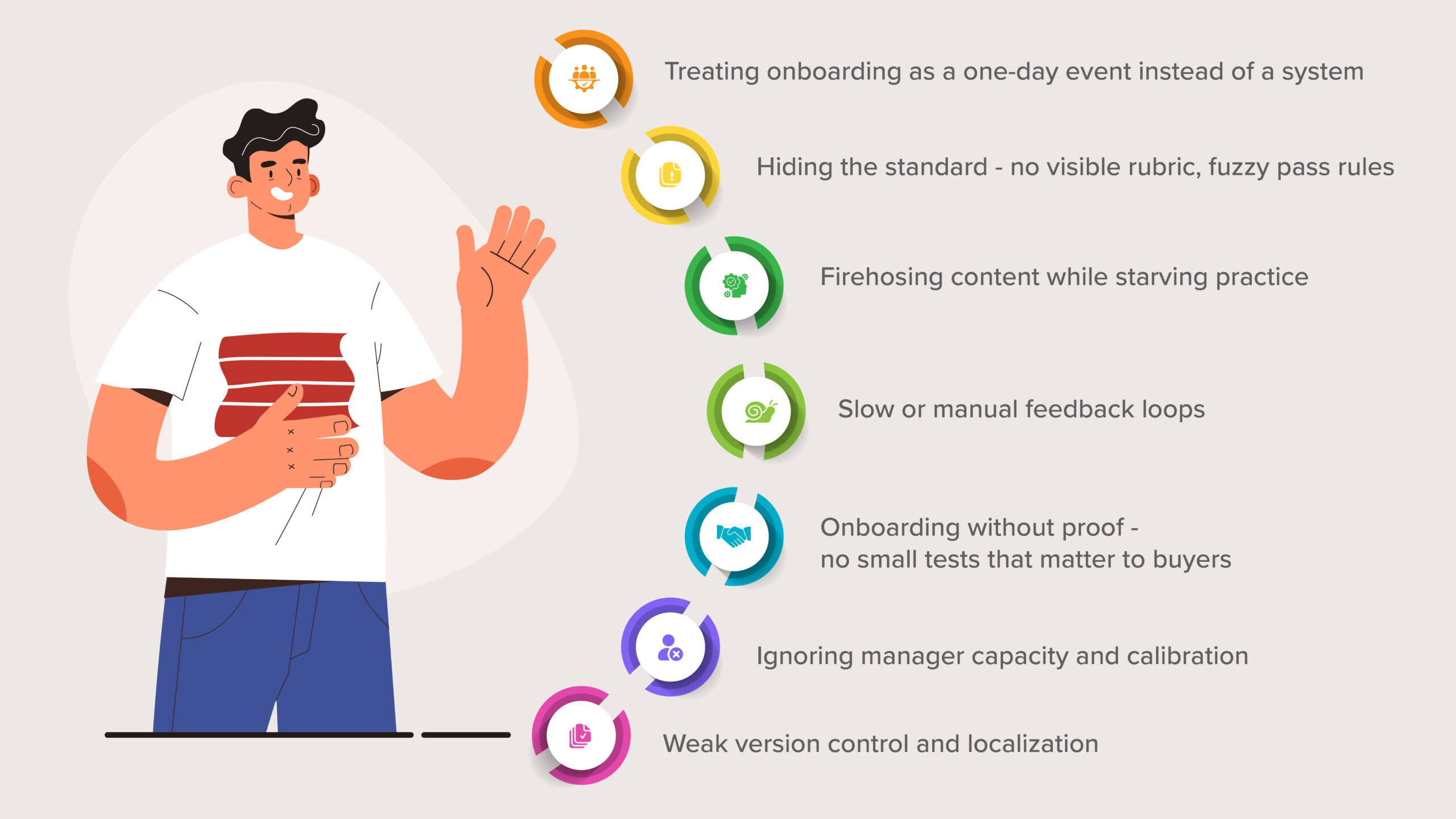How to Understand Customer Pain Points?

- The common problem that customers face while trying to make a purchase decision
- How can they identify a customer pain points
- And what can they do to fix them
What Are Customer Pain Points?
Customer pain points can be defined as a certain set of persistent problems that a prospect faces in their business and marketplace. Any type of prospect can have a business pain, whether they are an individual or a large company.
First, let’s understand how to identify the pain points of the customers:
How can you identify your Target Customers’ Pain Points?
Here are some ways to identify your target audience’s pain points
1. Carry out surveys and ask the right questions:
Carrying out a simple survey to understand your customer’s pain points is not difficult at all. But the challenge here is to get your customers to answer those surveys.
In order to get your customers interested in your surveys, you’ve got to keep the survey questions simple and targeted. Here are some question examples which reps can use to carry out survey that will help them understand their customer base:
- What complications or issues were you facing or trying to solve when you came across our product?
- Can you please let us know the top 4 advantages that you have felt using our product or service?
- What more would you like us to do or how can we improve our product?
- Besides yours what other roles/titles do you feel can benefit from our product/service?
- If our product is not available then what other alternative products do you think of to solve your problem?
- What’s keeping you away from the alternate product/service?
2. Understand your customer base through your sales teams
When it comes to identifying the customer’s pain points one should not only focus on the existing customers but also take the lost prospects into consideration.
Analyzing diverse customers is essential to get a true understanding of their problems. And every lost deal is a crucial pain point that your product/service has failed to solve. It could be a cost-related problem or your product is lacking some features. You can take help of your sales team to identify these shortcomings and working on them to improve your service. You can ask your sales reps/teams to create a document in which they lodge their observation after every failed sales pitch. The document should include feedback for questions like
- What were the problems faced by the prospect?
- What were the things prospect liked or disliked about the product/service?
- What was the reason, prospect had to turn down our product?
- What feature could have stopped the prospect from turning down our service?
- Was the prospect comparing our product to any competitor’s product? If so specify the feature or advantage they have over us.
This analysis will be highly beneficial for you in long run.
3. Check out the online customer reviews on your product
Reading the reviews that your customers post online (on social media or any other platform) about your products and services, helps you to clearly understand their pain points.
These reviews give you insights into
- What your customer’s like the most about your services
- Where do you lack
- And how can you improve
Also you can read your competitors reviews and understand how they are doing better with their products/ services in comparison to yours.
4. Study and understand your competitors
Knowing your competitors and being aware of their presence is very crucial. So, study your competitors’
- Websites,
- Their features
- Their pricing
- Their marketing strategy and ads
- Their customers etc
to understand how to improve your products and your sales strategy.
Studying all these aspects will help you to improve your products and sales strategy and lure your customers into buying your product or service.
What are the common customer pain points that businesses have to deal with & how to fix them?
Let us now explore the types of pain points that customers usually have while doing business with vendors and what can you do to fix those pain points
Financial pain points
Financial pain points are the most critical of all pain points. Financial pain points occur when customers feel that they are paying too much for a product/ service.
Your customers love choices and they are always on the lookout for cost-effective solutions that offer them more services for the money invested. Businesses need to strategize for budget-friendly options and customer-friendly subscription plans, in a way that caters to customer expectations and is aligned to business priorities.
Tip to fix this issue: The main goal for you should be to prove to the potential customers the right value they will perceive in choosing your products.
Customer support teams and account managers should understand customer expectations, competitor benchmarks, and budget to offer an optimally priced solution that caters to the needs of the customer.
Support Pain Points
Customer support is one of the important business functions. With improper support, most of the crucial areas are impacted. Customers may have product-related queries and most of them would expect prompt customer support. Some common support issues are:
- Delayed response
- Lack of product knowledge
- Not available on customers preferred channel
When businesses fail to deliver the right solution to the above customer pain, it impacts customer retention & loyalty.
Tip to fix this issue: One of the best ways to exceed your customer expectations is by helping them in real-time, with
- Digital engagement tools like live chat or video chat
- Co-browsing
- AI chatbots etc
Process Pain Point
- Connecting to the right department
- Application submission
- Lengthy and difficult buying process
- Complicated payment method etc
Productivity Pain Points
The productivity pain points are when the customer want to make the most of their time and are most likely frustrated due to,
- Inconvenience of using their current solution
- And the time they are wasting on it
And now they want a streamlined experience of using a product.
Tip to fix this issue: Businesses need to convince their customers that their product is
- User-friendly
- Hassle-free
- And time saving
You can use images and product descriptions that explain how your product helps practically.
Final Thoughts
Understanding and identifying customer pain points is not an easy task. A lot of work has to be put in for understanding your customers precisely. Most businesses only worry about sales but do not work towards understanding and solving problems of your customer base. When you design your offerings and sales strategy keeping in mind the problems your target audience is facing you’ll surely succeed.
Learn about the goldilocks effect and how to apply it in your businessPermalink
What is the Goldilocks Effect and how to apply it in your business?
Learn how to collect customer insights on your brands and productsPermalink
Collect Customer Insights on your Brand and Products
Want to learn the best ways to improve your customer satisfaction survey rate?Permalink
Read 5 Best Ways to Improve your Customer Satisfaction Survey Rate
Want to know about the best ways to capture feedback from your customers?Permalink
Read Best Ways to Capture Feedback from the Customers
Looking to expand your business into new markets?Permalink
Read How to Expand into New Markets Efficiently?
Learn why active listening ia the most important skill for a sales reps todayPermalink
The Ultimate Guide to Active Listening in Sales
Learn about these 4 crucial techniques which you can use to build rapport virtuallyPermalink
Related Posts
LMS + Gamification for Enterprise Sales Teams
The 2025 Guide to LMS + Gamification for Enterprise Sales Teams Enterprise sales is a moving target. Messaging changes. Products...
Creating a Safe Learning Environment: AI’s Role in Sales Skill Development
In today's fast-paced sales environment, creating effective training programs that allow sales representatives to develop their skills in a supportive...
How can Trainers Use AI Sales Role plays to Train MRs Better Detailing and Closing Techniques
In general, companies investing in sales training are 57% more effective than those who don’t. Let’s break that down with...
Looking for a sales training software that takes your sales training to a whole new level?
Explore SmartWinnr’s Learning and Gamification features. Learn how to run fun and engaging sales training and sales coaching for your team through SmartWinnr.
Curious to learn more about it? Book a demo today!
 Two way AI Role Plays
Two way AI Role Plays Targeted Learning
Targeted Learning Gamification
Gamification Sales Coaching
Sales Coaching Sales Contest
Sales Contest Implementation
Implementation Consulting
Consulting Enterprise Ready
Enterprise Ready Pharmaceuticals
Pharmaceuticals Medical Devices
Medical Devices Insurance
Insurance Banking
Banking Technology
Technology Senior Living
Senior Living Sales
Sales Call Centers
Call Centers Marketing
Marketing Improve Sales Productivity
Improve Sales Productivity New Hire Onboarding
New Hire Onboarding New Product Launch
New Product Launch Channel Partner Training
Channel Partner Training Sales Events
Sales Events Success Stories
Success Stories Whitepapers and eBooks
Whitepapers and eBooks Contest Template Designer Tool
Contest Template Designer Tool Sales Training
Sales Training Gamification
Gamification All Blogs
All Blogs
